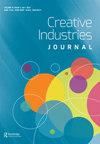全球创意城市时尚的物质和象征性生产。业界对21世纪伦敦的看法
IF 0.9
0 HUMANITIES, MULTIDISCIPLINARY
引用次数: 0
摘要
为了应对传统制造业的全球化和象征性经济日益重要的意义,时尚城市现在由不同的材料、设计/创意和象征性生产形式混合而成。这些元素之间的交叉在全球时尚城市中尤为明显,这些城市经历了深刻的去工业化过程,以及制造业和象征性经济之间的转变。本文通过主要行业参与者的视角探讨了伦敦与时尚的关系。我们利用2016年至2018年间进行的30次半结构化的深度采访,探索城市时尚生产的材料、创意和象征形式之间的相互作用。访谈材料由国家统计局和高等教育统计局收集的数据分析支持。伦敦的时尚生态系统被视为非常注重创造力、艺术价值和象征形式,然而,这些都被视为与可行的时尚设计行业、有效的商业文化和制造体系相矛盾。本文通过揭示全球创意城市中生产、创意和象征元素之间的互动,为时尚在城市经济中的定位文献做出了贡献。本文章由计算机程序翻译,如有差异,请以英文原文为准。
Material and symbolic production of fashion in a global creative city. Industry’s perception of the 21st century London
In response to globalization of traditional manufacturing and the growing significance of a symbolic economy, fashion cities are now formed by different mixings of material, design/creative and symbolic forms of production. The intersection between these elements is particularly evident in the global fashion cities, which have experienced a profound process of deindustrialization and a shift between manufacturing and symbolic economies. This paper explores London’s relationship with fashion through the perspec- tives of key industry actors. We draw upon 30 semi-structured in-depth interviews undertaken between 2016 and 2018 to explore the interplay between material, creative and symbolic forms of fashion production in the city. Interview material is supported by the analysis of data collected from the Office for National Statistics and the Higher Education Statistics Agency. London’s fashion eco- system is seen as having strong focus on creativity, artistic values and forms of symbolism, which are however regarded as in tension with a viable fashion design industry, an effective business culture and manufacturing system. The paper contributes to the literature on the fashion’s positioning in urban economies by shedding light on the interaction between production, creative and symbolic elements in a global creative city.
求助全文
通过发布文献求助,成功后即可免费获取论文全文。
去求助
来源期刊

Creative Industries Journal
Arts and Humanities-Visual Arts and Performing Arts
CiteScore
2.40
自引率
27.30%
发文量
30
期刊介绍:
The scope of the Creative Industries Journal is global, primarily aimed at those studying and practicing activities which have their origin in individual creativity, skill and talent, and which have a potential for wealth creation. These activities primarily take place in advertising, architecture, the art and antiques market, crafts, design, fashion, film, interactive leisure software, music, the performing arts, publishing, television and radio.
 求助内容:
求助内容: 应助结果提醒方式:
应助结果提醒方式:


